Scientific production is undergoing a gradual process of democratization. Over the past 50 years, a growing number of cities and countries have joined the global scientific community, and are making a significant impact. A more balanced distribution of paper citations means greater equity between researchers regardless of their location.
Part of Nature Index 2018 Science Cities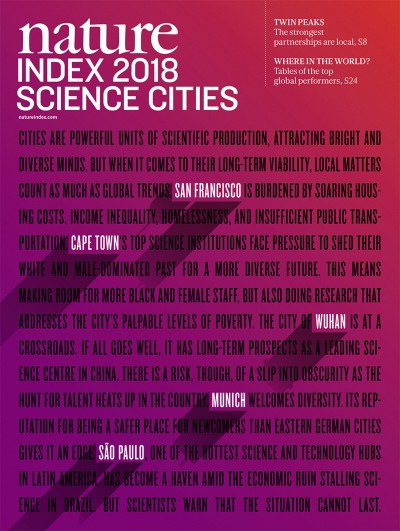
These changes have not gone unnoticed in traditional science hotspots, such as London, Paris and Tokyo, but those cities need not fear relinquishing their dominance in the foreseeable future. The observed spatial dispersal of knowledge production is driven by the emergence of new centres of higher education and innovation, not productivity losses at the top, and the newcomers have much ground to catch up.
We present an analysis based on 2.8 million scientific papers indexed in the Web of Science database between 1999 and 2014 that correspond to the top 10% of highly-cited research by subject, publication year, and document type (articles, reviews and letters).
Affiliations are assigned to urban areas based on fractional counting, which accounts for the number of distinct urban areas that contributed to a paper. For each observation, we used the three-year moving average of publication count.
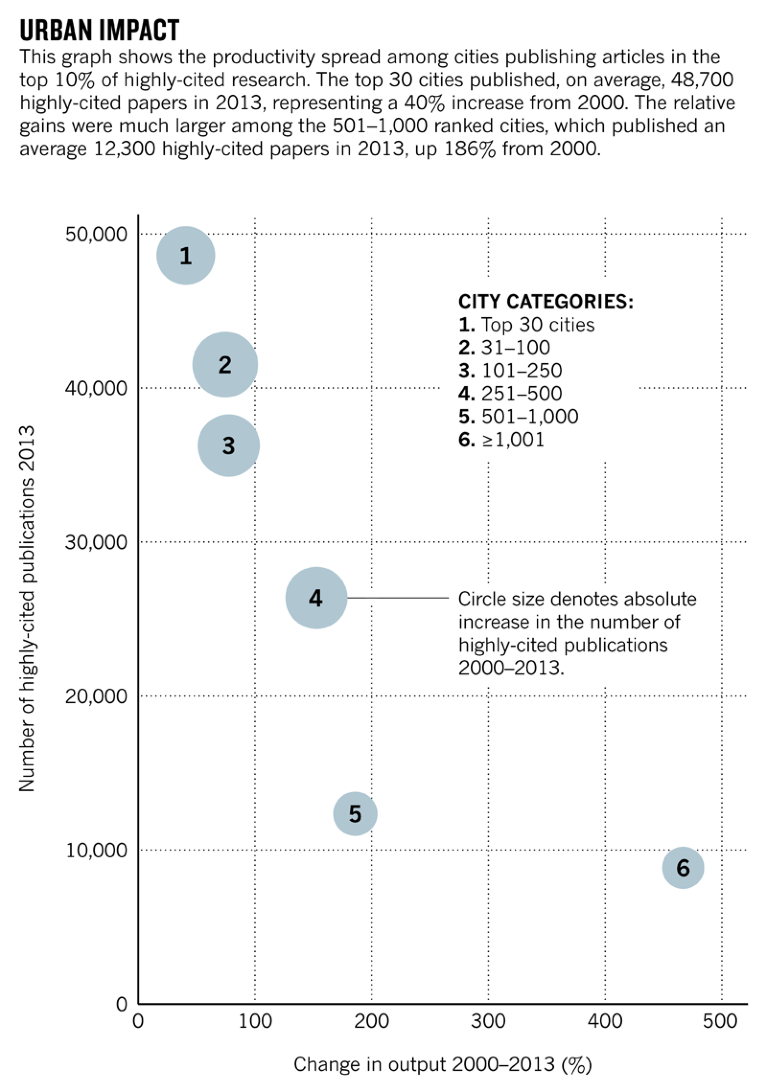
Source: Maisonobe et al./Web of Science
More even spread
Our analysis has revealed a gradual shift in the global research landscape. In 2000, 3,180 urban areas in 171 countries published at least one highly-cited publication. By 2013, the number of contributing urban areas had grown by 52% to 4,841, in 190 countries.
While most of the highly-cited research is still concentrated in a few hotspots, it is more evenly spread than a decade ago. The top 10 most impactful cities accounted for 21% of global output in 2000, but only 17% in 2013.
Countries such as China and Iran, which have made significant investments in research and development over the past decade, have seen swift growth in their share of the output. China’s global share of highly-cited publications rose from 2% to 12% between 2000 and 2013, making it the second most impactful country after the United States. Iran, South Korea and Australia registered a one percentage-point increase in their share.
Within many countries, the production share of secondary cities has grown faster than those at the top. For example, Beijing’s national share of highly-cited publications decreased from 22% to 19% between 2000 and 2013 and Paris’s share declined from 40% to 37% during that same period. Meanwhile, those of Wuhan and Guangzhou have increased by two percentage points, and those of Marseille and Toulouse by more than 0.5.
People pull
An analysis of the entire publication record reveals a more level playing field. In an earlier study, we assessed 19 million documents indexed in the Web of Science database between 1999 and 2014, and found that while the top 10 publishing cities accounted for 17% of the world production in 2000, they produced only a 14% share in 2013.
This shift has resulted in an expanding network of scientific collaborations between cities, within and across countries and regions. The share of publications co-authored from at least two urban areas belonging to the same country has increased from 15.5% to 20%. Intra-national links have particularly increased within Latin America and Africa.
These changes stem from the creation of universities across all levels of the urban hierarchy. Whereas in the past, the researcher population was over-represented in a few megacities, it now corresponds more closely with the world’s population distribution. Where there are bees, there will be honey.
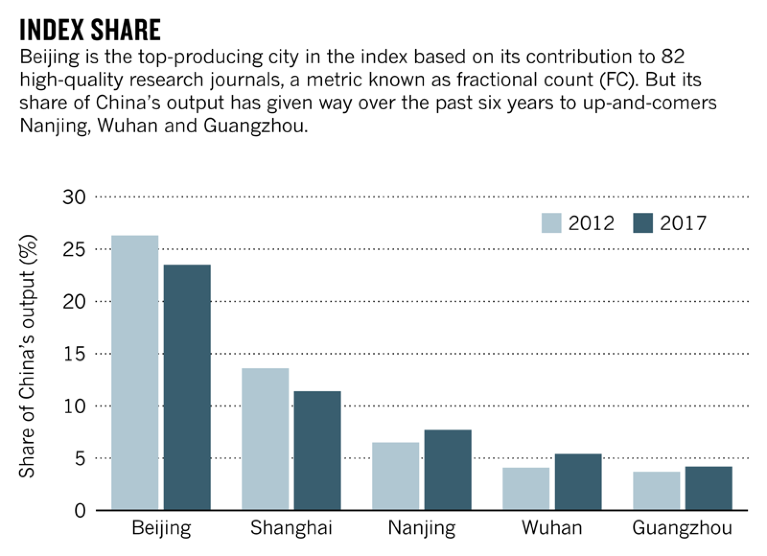
Source: Nature Index
Reaching the heights
Changes to the global science landscape have galvanized traditional science powerhouses. Facing the entrance of Beijing and Shanghai in the top 10 most productive and cited cities — together with the rise of Chinese institutions in the top university rankings — several countries have established new excellence policies.
Among others, Japan established the 21st Century Centers of Excellence programme in 2002 with an initial 18 billion yen (US$160 million), in 2005 Germany committed 4.6 billion euros (US$5.38 billion) to the Excellence Initiative to create elite universities, and France announced in 2010 the Investments for the Future programme, of which 24 billion euros would go to higher education, training and research.
These policies have strived to secure the position of traditional hotspots by concentrating research funding on their most visible institutions. By neglecting peripheral sites of scientific production, such policies could risk reverting to a less diverse and more skewed landscape, which would be detrimental to science.
The performance of a city is tightly connected to the performance of the cities it collaborates with. It is these links, particularly at the national level, that make cities strong globally.
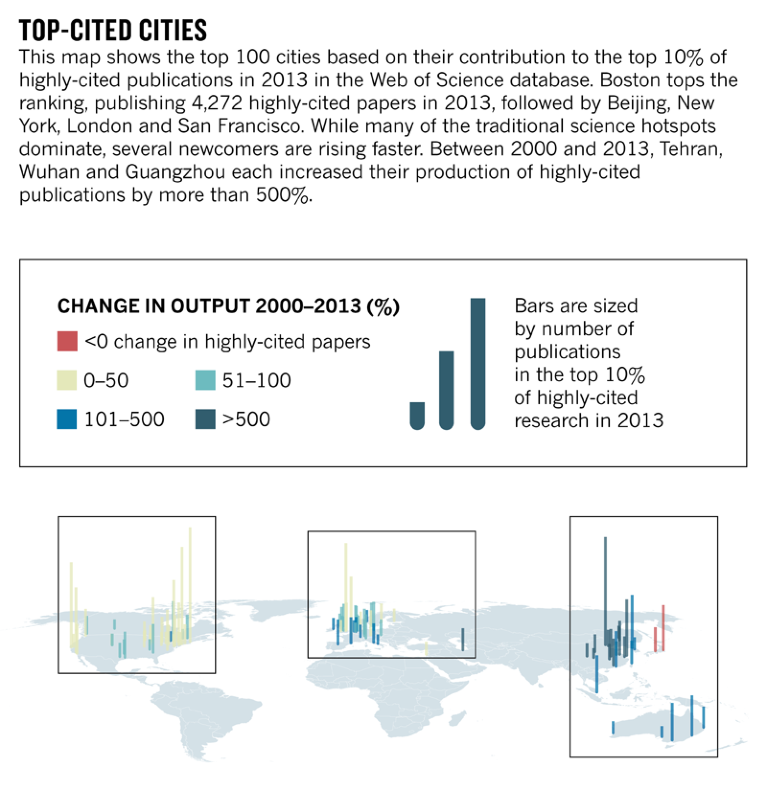
Source: Maisonobe et al./Web of Science
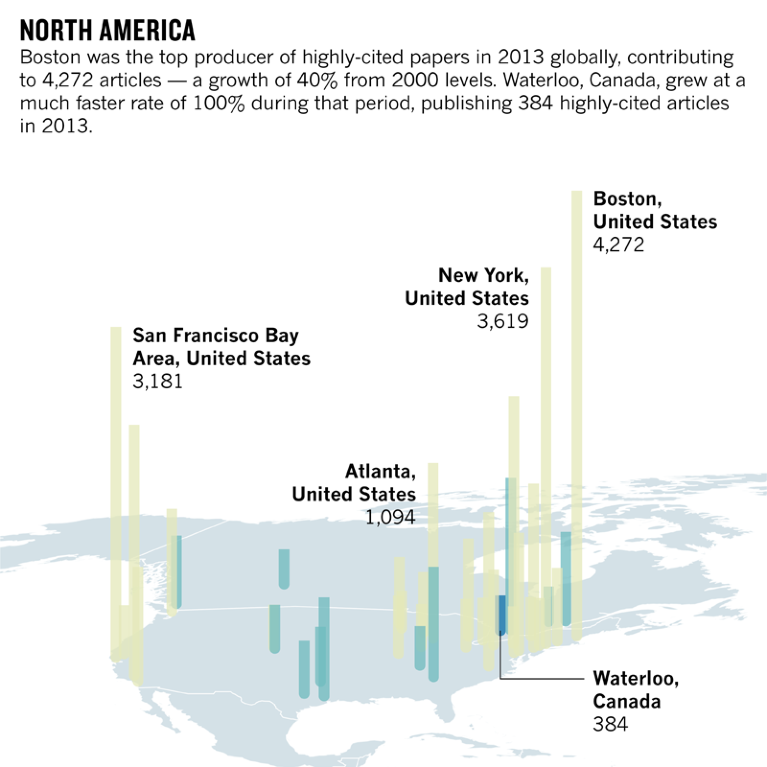
Source: Maisonobe et al./Web of Science
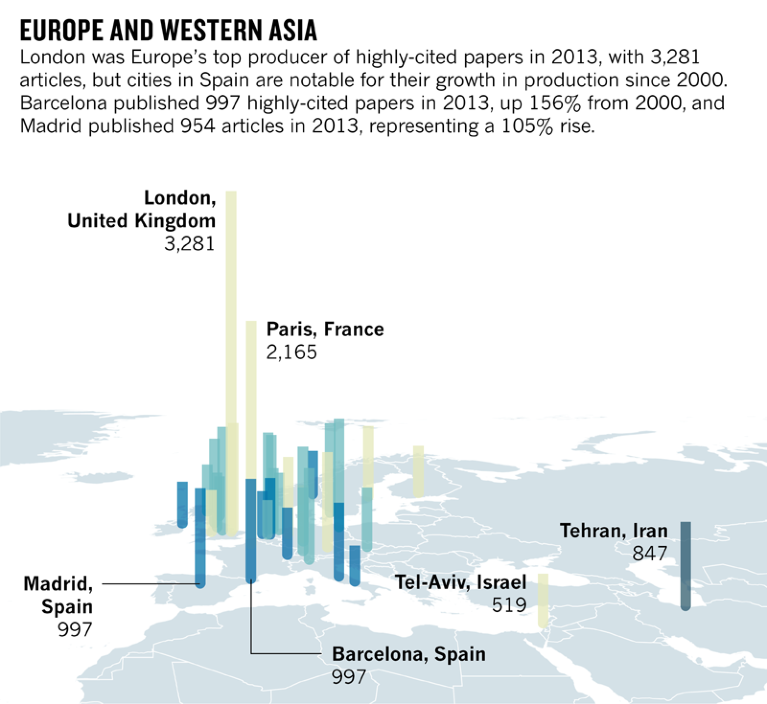
Source: Maisonobe et al./Web of Science
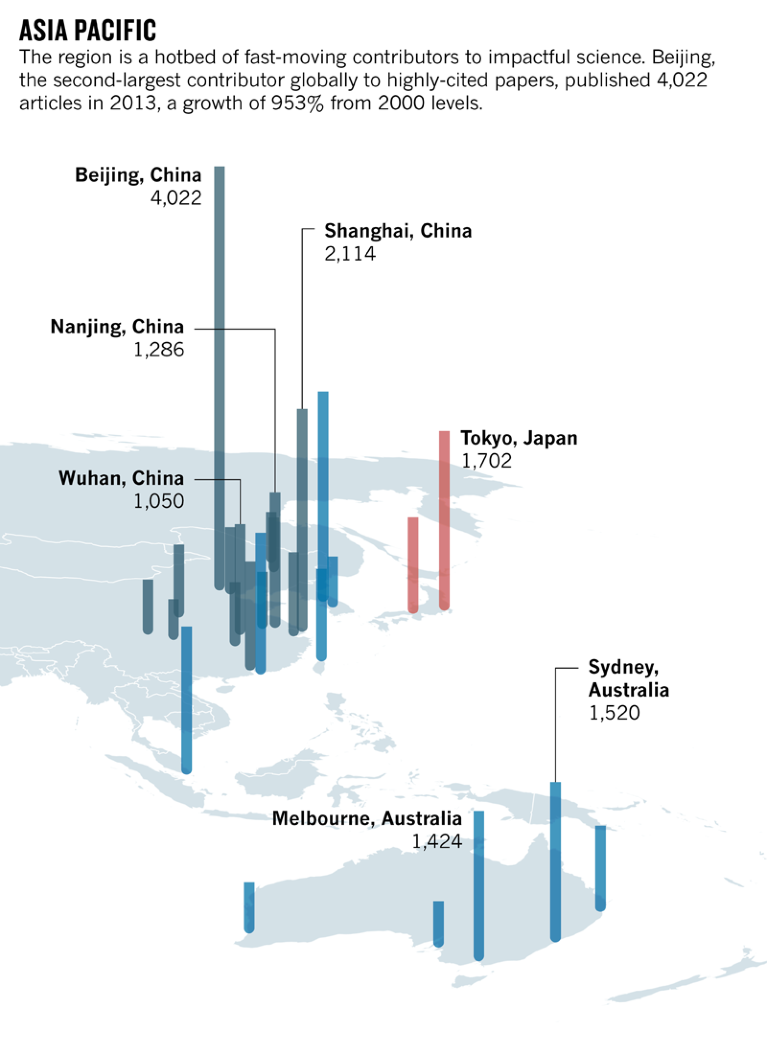
Source: Maisonobe et al./Web of Science

 Counting capital costs
Counting capital costs
 The cape of change
The cape of change
 A venture under pressure
A venture under pressure
 City links
City links
 A European heavyweight
A European heavyweight
 Discovery central
Discovery central
 Standing firm
Standing firm








